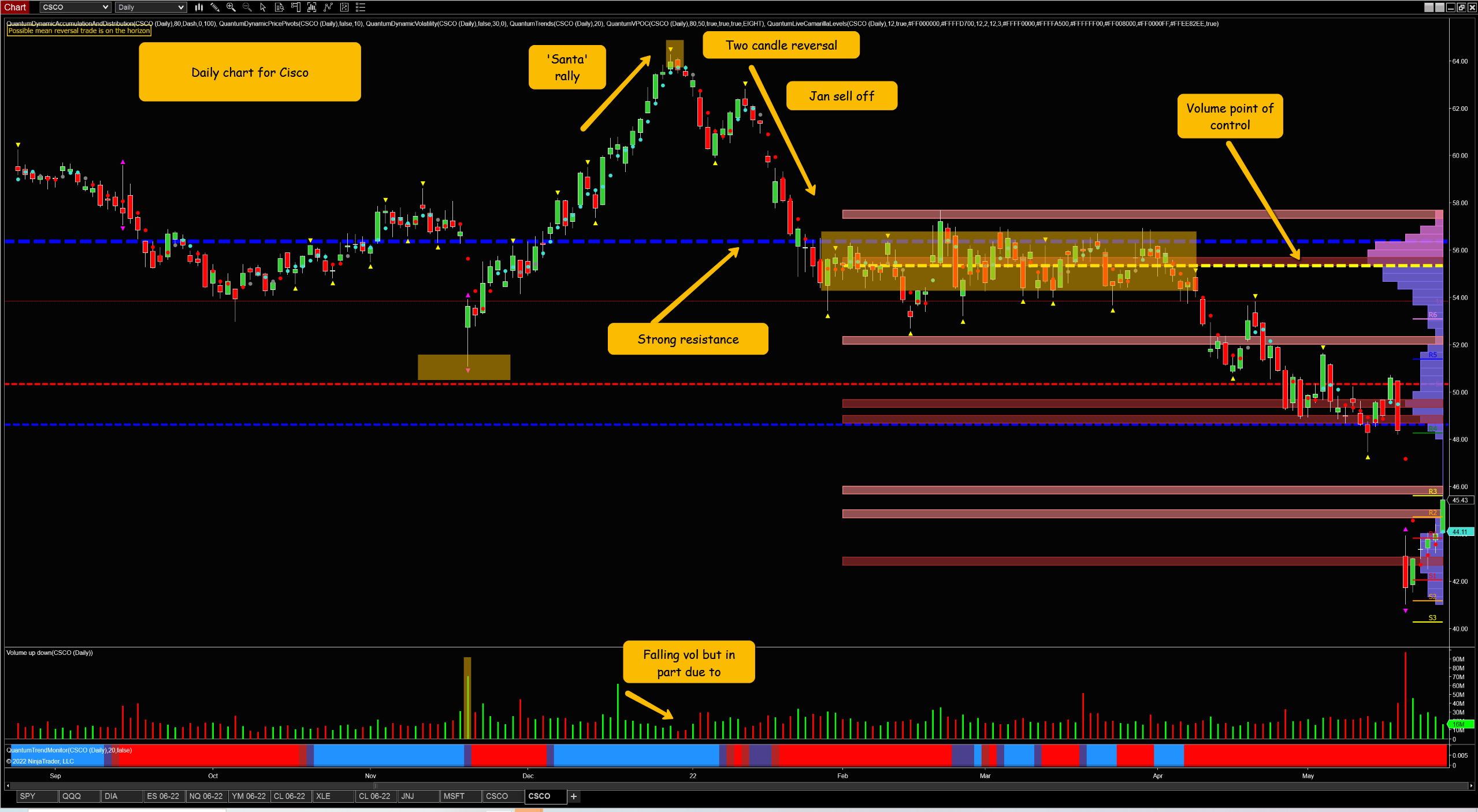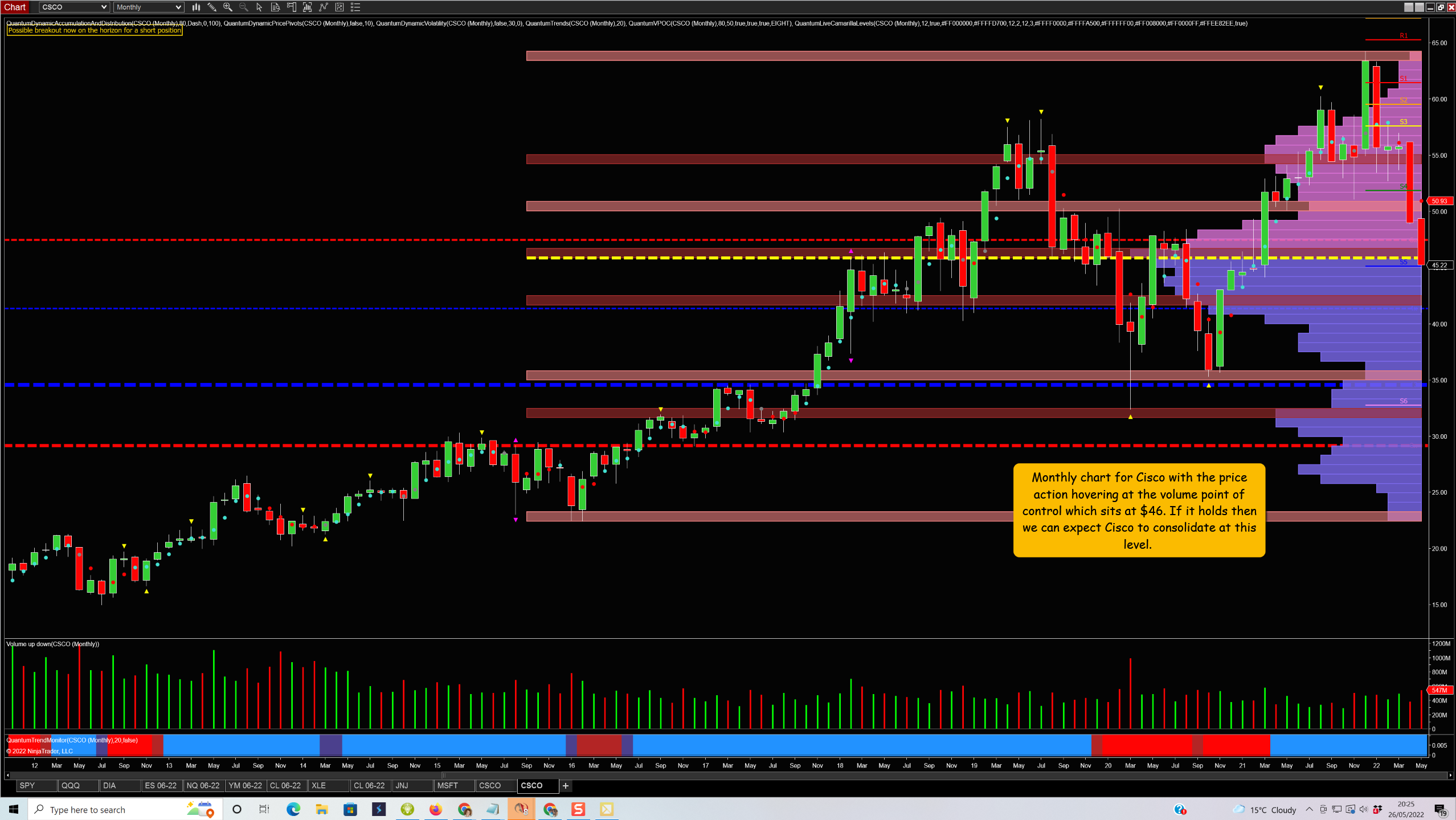
A decline in future revenues has been cited as the reason for Cisco's (NASDAQ:CSCO) sharp gap down on the release of its earnings despite the earnings per share number coming in ahead of expectation. However, a look at the chart for the company and, in particular, the slower time frames always suggested Cisco was looking weak and falling in line with the tech sector.
If we start with the daily and the gap lower in November 2021 on supply issues caused by the pandemic, the stock then staged a remarkable recovery to end 2021 at $64.84. The deep wick to the volatility candle supported with solid volume, a sure sign that buyers had stepped in and the stock of a well-established company and one considered to be on its way to becoming a ‘dividend aristocrat.’
However, in the trend toward the 2021 high, there are two significant anomalies that I have marked on the chart, and these alone would have raised alarm bells. Note too the fall away in volume as the stock approaches the $64.84 price point. However, seasonal factors are in play as we are in the traditional ‘Santa’ rally when volumes are generally lighter and prices are simply marked higher.
For Cisco, the move comes to halt on Dec. 29, with the stock then rolling over as the new trading year gets under way, despite a small rally continues lower as January turns into a grim month for equity markets.
By the end of January, Cisco is down almost 20% and begins to move into a congestion phase oscillating around the volume point of control at the $55 region while building a strong ceiling of resistance (thick blue hatched line) at $56.50. What is noteworthy about this consolidation is the relatively tight range of the price action along with a lack of volatility as the phase builds into an excellent example of Wyckoff’s second law of cause and effect. In other words, the longer the ’cause’ – the consolidation – the greater the ‘effect,’ i.e. the breakaway move, which, in this case, is lower given the strength of the combined volume and price-based resistance.
Despite attempts to rally, further short sideways price action, and some support at $48, Cisco gaps lower once earnings are released. But as I have written and mentioned in webinars, declines and shakeouts also provide buying opportunities and in Cisco’s case, $97 million of stopping volume comes in immediately, the biggest inflow since June 2020. And as we can see on the chart this has stabilized the price and helped to push Cisco higher.
As a profitable, large almost mega-cap company that pays a healthy dividend and one that has been increasing for the past 13 years, a company like Cisco is always going to attract flows whenever there are significant price dips and the question now is where next for the price and for this we need to consider the weekly and monthly charts.

The weekly chart confirms the reversal higher last week on solid volume but note how the price action is now looking to approach the resistance marked at $47 (the red hatched line), which is also very close to the volume point of control on the monthly chart suggesting this is where Cisco is likely to pause and consolidate.

Finally, the monthly chart. Aside from confirming the likely upcoming consolidation as the price action inches back towards the volume point of control at $46, note how the December and January two-candle reversal pretty much sums up the dramatic shift in market sentiment at the start of 2022. However, if Cisco breaks and holds above the vpoc and the further price resistance at $48 (red hatched line), $51.66 is the next logical price objective (the high of this month’s candle). Thereafter, the resistance on the weekly chart is at $54 and back to the volume point of control in this time frame at $55.43.
In summary, the fall in Cisco has attracted plenty of dip buyers. Iif we do see a general recovery in the tech sector, then there is no reason why Cisco should not be pulled along as well.
